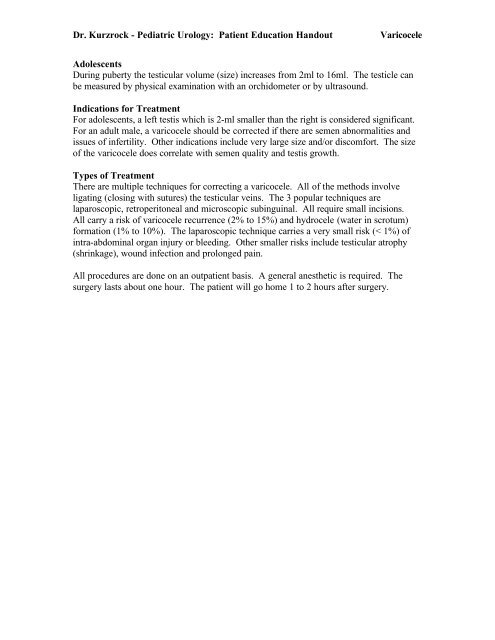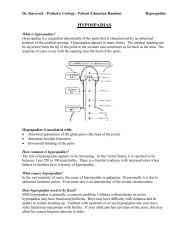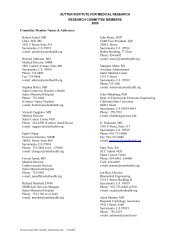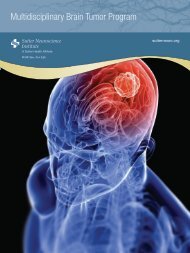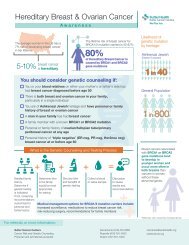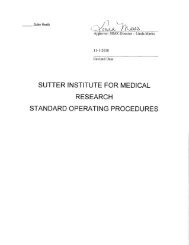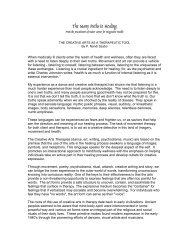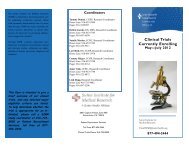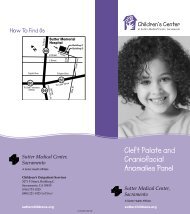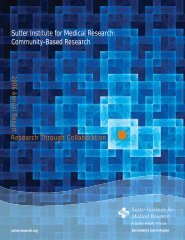Adolescent Varicocele
Adolescent Varicocele
Adolescent Varicocele
- No tags were found...
You also want an ePaper? Increase the reach of your titles
YUMPU automatically turns print PDFs into web optimized ePapers that Google loves.
Dr. Kurzrock - Pediatric Urology: Patient Education Handout<strong>Varicocele</strong><strong>Adolescent</strong>sDuring puberty the testicular volume (size) increases from 2ml to 16ml. The testicle canbe measured by physical examination with an orchidometer or by ultrasound.Indications for TreatmentFor adolescents, a left testis which is 2-ml smaller than the right is considered significant.For an adult male, a varicocele should be corrected if there are semen abnormalities andissues of infertility. Other indications include very large size and/or discomfort. The sizeof the varicocele does correlate with semen quality and testis growth.Types of TreatmentThere are multiple techniques for correcting a varicocele. All of the methods involveligating (closing with sutures) the testicular veins. The 3 popular techniques arelaparoscopic, retroperitoneal and microscopic subinguinal. All require small incisions.All carry a risk of varicocele recurrence (2% to 15%) and hydrocele (water in scrotum)formation (1% to 10%). The laparoscopic technique carries a very small risk (< 1%) ofintra-abdominal organ injury or bleeding. Other smaller risks include testicular atrophy(shrinkage), wound infection and prolonged pain.All procedures are done on an outpatient basis. A general anesthetic is required. Thesurgery lasts about one hour. The patient will go home 1 to 2 hours after surgery.


